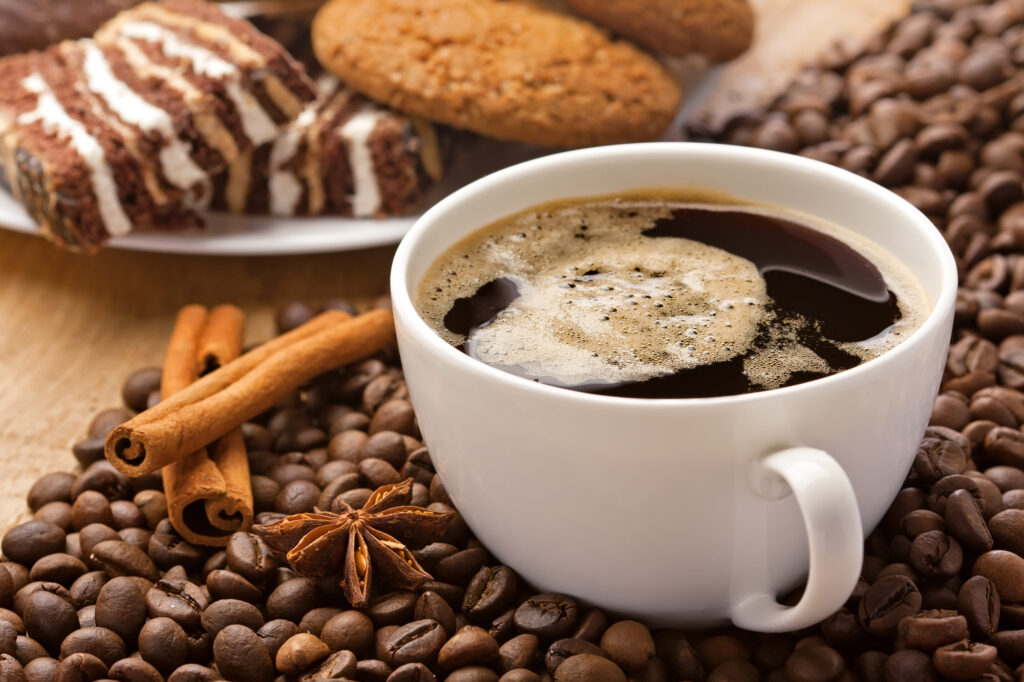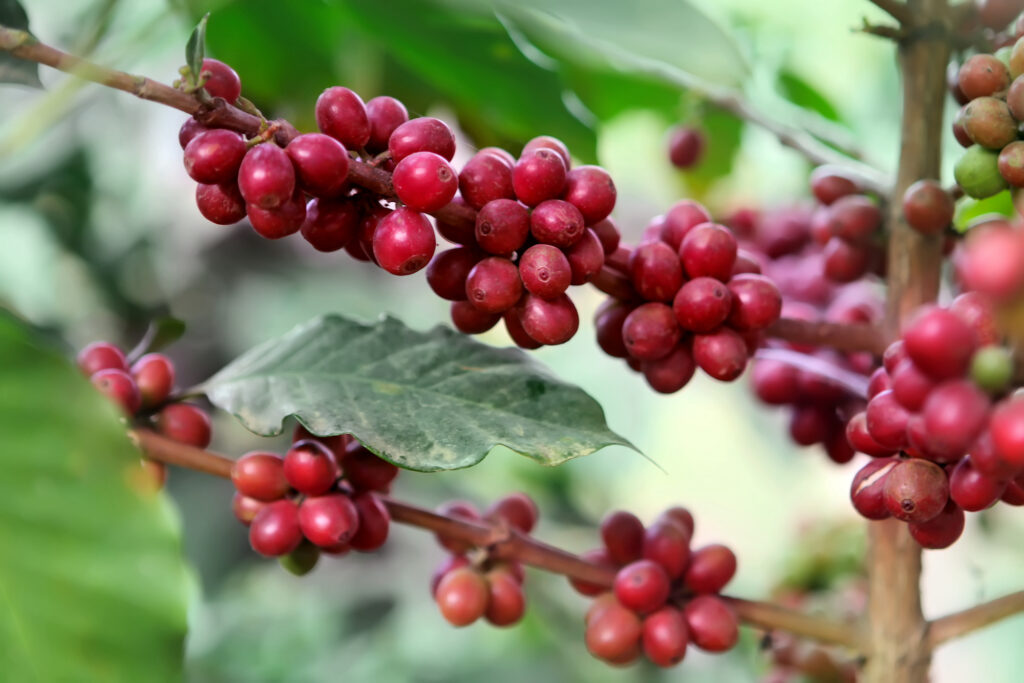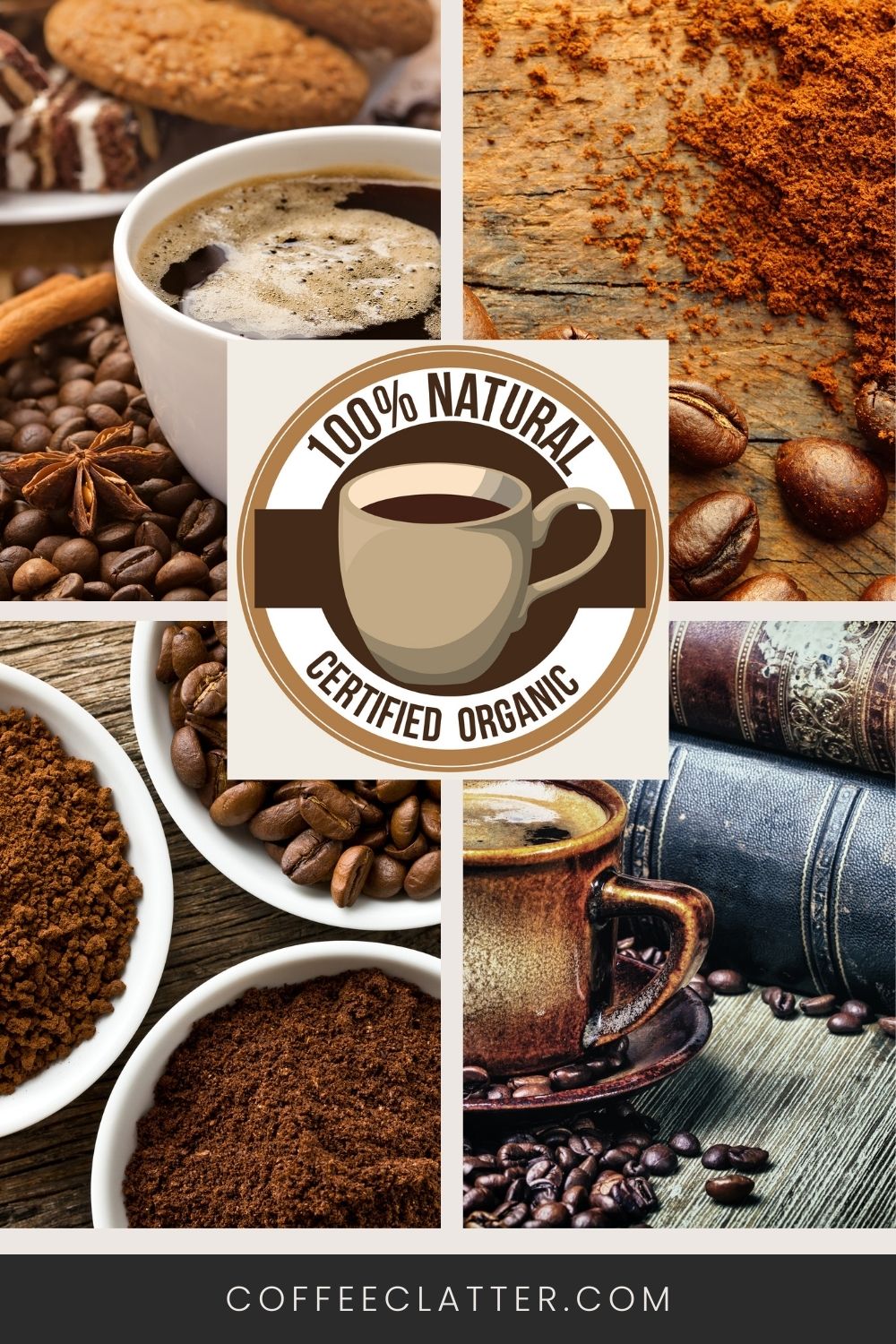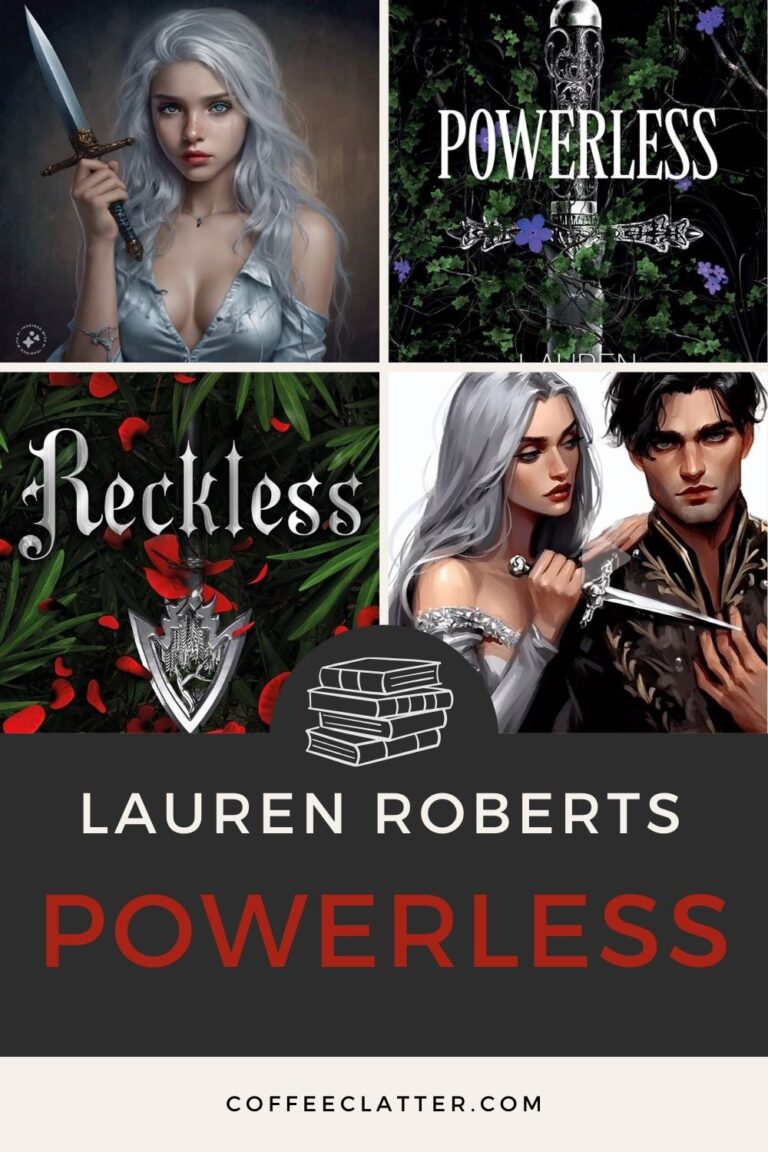Organic coffee – is it really better?
In the modern world, almost nobody has the time or the opportunity to grow food. We are living a fast life, and we buy our food at grocery stores or online. However, as we want to take care of our health, we opt for organic food as a healthier and tastier option. The market has recognized that, and today, the estimated market worth of organic food is $50 billion annually.
And coffee is no exception in that story. After all, coffee is the first imported organic food in the USA, leaving organic chocolate and organic cocoa far ahead. Coffee is people’s favorite way to start or end the day, we want our beverage to be the healthiest as it can get. But, is organic coffee better than non-organic one? Find out in this comprehensive guide, where we reveal all the myths about organic coffee.

What is organic coffee?
The term organic coffee should represent the coffee grown naturally. So, only sun, air, soil, and water, without pesticides or any other chemicals. This definition is great, but not an international standard. The one international organic standard to rule them all simply doesn’t exist. If you want your coffee to be labeled organic, there’s a lot of job waiting for you. You need to obey the terms of your country, and every other country where your coffee will be exported. Talk about headaches. And then, we have four more subdivisions of organic products in the USA.
- “100% organic” – reserved for products produced and processed using only organic methods. The product can’t have any of the ingredients from the National List of Prohibited Substances. These products are almost impossible to produce and are usually single-ingredient products. The USDA organic seal is on the front panel. No coffee is 100% organic.
- “Organic” – produced using organic methods, with a minimum of 95% organic ingredients. The rest 5% can’t be GMO. The non-organic ingredients must also be on the list of the permitted substances. Most of the organic items are in this category, and they are also labeled with USDA organic seal.
- “Made with organic ingredients” – means only 70% – 90% of the ingredients are organic. These products can’t get a USDA organic seal anywhere on the packaging. Also, they can’t contain any GMO and must be produced without irradiation or sewage sludge. This category is quite often when companies gradually change their products to organic ones.
- Below 70% or organic ingredients – the product can only use the term “organic” in the ingredients panel. Hence, no USDA labels for them.
Not that simple, right? Let’s take a look at what Uncle Sam asks from the coffee farms.

USDA certified organic coffee conditions
Organic coffee farming
Any coffee farm that wants the USDA (U.S. Department of Agriculture) organic label must have a minimum of 95% organic ingredients. The USDA forbids chemicals, synthetic fertilizers, synthetic pesticides, and genetically modified organisms (GMO). When starting your organic farm, you need to have hard proof you used none of the prohibited chemicals for the last three years. You can still use natural fertilizers like compost, coconut husk, manure, and similar organic growth helpers. However, some exceptions exist, but more on that further in the article.
Organic coffee processing
But to earn the precious label, the farming itself is not enough. The processing of the coffee also must comply with the strict USDA rules. Most of the coffee beans are hand-picked, so farm owners must ensure no bag, container, or basket was contained with the chemicals. Organic coffee bags are often color-coded, so they don’t get mixed with the non-organic ones. Farmers also need to recycle the waste left from dehusking and de-pulping. Often, the waste goes straight back to the soil as a natural fertilizer.
Although both wet and dry processing is organic, dry processing is a more organic-friendly one. Wet processing takes a lot more time and uses a lot of water. Of course, farmers also must recycle all the water used in the process.
Organic coffee roasting
The finishing process of roasting the coffee also must be chemical-free. Also, your roasting equipment must serve only for organic roasting. No chemical can come in touch with your organic coffee beans. So, you need to have a roaster that will roast only your organic beans. That can be a major issue for small roasters, as the industrial roasters are worth a pretty penny.
Where does organic coffee come from?
South America is the continent with the most organic coffee farms. It produces fascinating 75% of the world’s organic coffee. Peru is the leader, with 423,000 bags of organic coffee exported in 2010. Some of the other organic coffee producers are Brazil, Colombia, El Salvador, Guatemala, Honduras, Mexico, Ethiopia, and Indonesia. Usually, organic coffee farms are smaller in size, and we have farms of different sizes and purposes.
Single-origin coffee
Single-origin coffee beans are grown in similar environmental conditions. Their size, shape, taste, and rest of the perks are identical or near-identical. Single-origin beans mostly reflect the characteristics of a specific coffee-growing region in a country, for example, Bench Maji Zone in Ethiopia.
Co-operative and estate coffee
Co-op and estate coffee are processed in the same processing facility, with one overseer managing the process. As the coffee farms are usually broken into small parcels, we have a situation where different farm owners produce the same bean type. The main difference is that co-operative coffee offers beans from the different growers and doesn’t own its processing facility. Estate coffee is a usual term for larger farms, which have every part of coffee growing covered, from farming to roasting and shipment preparation. Hence, co-operative coffee is usually processed in a nearby estate facility for a fee.

Small farm
A small farm is the core of the coffee business, and some of our favorite beans come from small, mostly unknown farms. Usually, small farms are family-owned, and they grow their coffee plants naturally. Their beans are single-origin, and they don’t have their own facilities, just a piece of land for coffee growing.
Micro-lot
Micro-lots are known as the best of the best when it comes to coffee growing. The beans in the micro-lots are of the highest quality and have a unique flavor and character. Not every bean can qualify for that. Micro lots produce a limited amount of coffee every year, but the taste is exceptional. And the price, of course. All the micro-lot beans are single-origin coffee.
Organic coffee pros and cons
It might come as a shock to you, but organic coffee isn’t a great thing by default. A lot of controversies follow this type of coffee growing, and not everything is black and white.
Pros
- Organic coffee can produce beans of much higher quality compared to usual coffee beans.
- By not using any chemicals, the health risks for the farmers are substantially lower.
- Natural fertilizers improve the quality of the soil.
- Shade-growing coffee promotes the biodiversity of the local ecosystem.
Cons
- Sadly, but most of the natural mechanisms fail to combat the coffee plant diseases.
- Organic farms produce a lot less coffee.
- Following the small production perk, organic coffee is substantially more expensive.
- Fake organic coffee certificates are a thing, and they are not that rare.
- Organic doesn’t mean 100% ethically grown
- Organic doesn’t necessarily mean high-quality beans

Why is organic coffee so rare?
The certificate price
To obtain the USDA organic coffee label, you must pay your humble part to the USDA. And that costs anywhere between $700 and $3000 per year, every year. Consider that most coffee farms are in third-world countries, and even $700 is a whole lot of money for, let’s say, Ethiopian small farmer. Or take Mexico as an example. The Mexican state of Chiapas is very well known across the globe for producing extraordinary coffee beans. And more than 90% of those coffee farmers are poor. Even though they work hard every day and export their coffee around the world. The situation is the same worldwide. Most of the world’s coffee comes from small farms, which simply cannot risk that kind of money to get the label for the US market only.
The price of chemicals
Now comes the ironic part. Most of the coffee grown on small farms is organic. And the reason? Those poor coffee farmers simply have no money to buy pesticides or fertilizers. In Yemen, Ethiopia, and similar third-world countries, a lot of coffee is rustically grown. Pesticides are often so expensive or unavailable that small farmers often don’t get a chance to use them. The same goes for artificial fertilizers.
The transition from non-organic to organic farms
The organic coffee farms have more income per pound, that’s for sure. But to obtain that income, farms need to survive the transition part. However, the transition could last for more than five years, and some farmers just couldn’t survive that. You need to let your farm be clear of pesticides and chemicals for 3 years and have solid proof for that. Then, your yearly yield will go down in no time, as organically grown coffee is weak to diseases and parasites and needs a lot of taking care of. And that’s pricey.

Organic coffee is healthier
Organic coffee is healthier for both coffee farmers and coffee drinkers. This might come as a shock for you, but non-organic coffee is heavily treated with more than 200 different pesticides during the growth process. As coffee plants grow in a tropical climate, in direct sunlight, the threat of insects, pests, and diseases is constant. That’s why the coffee bush needs heavy protection. With organic coffee, you have nothing to worry about. No pesticides, no chemicals. That means no farmer comes in touch with the chemicals, and no chance that some of those pesticides end up in your cup of joe. Of course, without any of these nasty chemicals, the soil and the water used in coffee farms is automatically healthier. So, organic coffee does wonders for the environment.
Organic coffee is not healthier by default
Organic doesn’t mean high-quality beans
Just because your beans are grown naturally doesn’t have to mean those are the best beans ever. Follow the Speciality Coffee Association (SCA), which lists the beans in three categories:
- Specialty grade
- Premium grade
- Below specialty grade
Specialty grade coffee has uniform beans, distinctive body, taste, and aroma. Also, specialty coffee has a moderate percentage of moisture, between 9% and 13%. If the coffee is organic but lacks other qualities, it will probably taste terrible. Would you eat or drink something gross just because it’s labeled organic? Probably not. Coffee can be organic and still taste bad.
Organic coffee can contain mold and mycotoxins
Organic coffee processing is not perfect. And sometimes, poor processing and low-quality storage can result in mycotoxin-producing mold. The mold can cause a variety of health issues, and most of them are serious, like cancer, DNA damage, kidney diseases, and such.
If your organic coffee wasn’t third-party tested, you are putting yourself at a health risk.
Organic coffee is sometimes not lab-tested
The tested coffee is the healthiest. If possible, choose coffee that was lab tested by a third-party organization. Lab tests include:
- pesticides
- ochratoxin A
- aflatoxin
- fungus
- mold
- and more…
If your organic coffee doesn’t have certified lab-test results, you may be putting yourself at a health risk.
Does organic coffee taste different?
The taste of the coffee is determined by a lot of factors. The bean origin, the roast level, grinding, the method of preparation, and a lot of other factors influence our tasting experience. However, all those things aside, we conclude that organic coffee does taste better to us. Perhaps it’s the placebo effect or the higher concentration of antioxidants, but our palate can taste the difference. Especially when we know that the best organic coffee is made from pure Arabica beans, which have a richer taste compared to Robusta beans.
How can you tell if coffee is organic?
Sadly, but you can never be 100% sure the beans you just bought are organic. However, we have some advice that can help in your search for organic.
- Mind the labels. Look for the “USDA Organic” label. Also, “Rainforest Alliance Certified” and “Bird-Friendly Certified” labels are a great sign. More labels are better.
- Mind the source of the beans. It’s more of a guideline than a firm fact. Some coffee exporting countries have a bad reputation for using too many chemicals. And for instance, Yemen, Sumatra, and almost the whole of Ethiopia don’t use any pesticides when growing coffee.
- Look for a Fair-Trade Label. This label means your coffee is produced in normal farming conditions, without exploiting the workers and respecting their rights.
What certifications besides organic can coffee have?
Bird Friendly certificate
This lovely certification was established in 1996 by the Smithsonian Migratory Bird Center. The sole purpose was to preserve the natural habitat of the migratory birds. The Bird-Friendly certificate requires the coffee to be grown under a natural shade of canopy trees. To get this certificate the farms must be certified organic. The soil must be healthy, and no pesticide can be used. Native trees on the farm must be at least 39 feet tall. After the pruning, the trees still have to provide at least 40% coverage. This is one of the hardest certificates to obtain, but saving the migratory birds from extinction is an honorable goal.
Fair Trade certificate
Fair Trade organization puts the workers and producers in the first place. Coffee can be both organic or non-organic, that’s not the point of this certificate. Fair Trade certificate means the coffee farm pays their workers liveable wages and treats them well, without breaking the worker’s rights. Environmental criteria are not that important for this certificate.
Rainforest Alliance certificate
Unbelievable, but the Rainforest Alliance is all about saving the rainforests. Rainforest Alliance has two criteria levels. The first one is Critical Criteria and, it’s critically strict. Requirements like no GMO, no forced labor, and protecting the environment are just the tip of the iceberg. The farms must fulfill all 37 criteria to get the certificate. Continuous improvement criteria include environmental sustainability, waste management, recycling, and fair wages. In six years, farms must progress in fulfilling these criteria to earn the Rainforest Alliance certificate. The Alliance merged with the UTZ (former certification organization) in 2017. On June 30, 2020, a new set of rules and criteria was released.
Other initiatives
- GCP Baseline Common Code – Common Code for Coffee Conductivity
- C.A.F.É.(Coffee and Farmer Equity) Practices – Starbuck’s certification
- Nespresso AAA Sustainable Quality – Nescafe’s specific certification
Self-certified labels
Self-certified labels can be a major issue, especially when people don’t know what they are buying. But the pretty, sparkly label says the best coffee ever, so it must be true, right? Wrong. Every certification and proof of quality must be a result of research provided by an independent control body. Otherwise, it’s a plain lie, made for tricking the customers. Imagine we write “The world’s best coffee blog ever, certified by coffeeclatter.com”.Self-certified labels are just misguiding the customers, nothing more.

Is organic coffee worth buying?
Let’s make a quick review. We have found out three important things here:
- Organic coffee is better for the buyer and the environment
- Most of the coffee from small farms is organic, but the owners lack the money needed to get the certificate
- Small farms often cannot risk switching from non-organic to organic coffee
When we settled that, here is a conclusion. Organic coffee is worth buying and benefits the ecosystem in a whole lot of ways. In the future, we estimate all the farms will switch to pure organic coffee production. However, bear in mind that some good organic coffee just can’t get that label, and they are left out in the marketing race. We always take the sides of the small farm owners. Their coffee can be truly wonderful, once you have the chance to try it. If possible, find out your bean source, and make contact with the small farmers. Their products are often better and cheaper than the industrial coffee brands. And you will be helping a lot of honest, hard-working families earn their living.
Where can I buy organic coffee?
If you happen to live in a coffee belt, the best thing you can do is go on a coffee farm and buy the beans directly. However, you probably don’t live there, so go visit your favorite coffee roaster nearby. If he can’t help you there, go online. Just make sure the coffee you just ordered has all the labels and good reviews from the customers. Organic coffee can be pricey, and you don’t want to throw away your hard-earned money.
Why does organic coffee cost more?
Farms and plants
To answer this question, we go to the very start of the coffee market cycle. And that is the coffee farms. Organic coffee farms have less yield per hectare than non-organic ones. More rare bean types cost more to grow. And don’t forget the exclusivity of the product. Organic coffee is a serious trend, and everyone wants it. Logically, the prices go up.
Harvesting
Coffee can be harvested using two methods: hand-picking or with a machine. Machine harvesting is quicker, simpler, cost-efficient, and brutally destructive to the coffee bush. Also, machines just pick all the coffee cherries from the bush without considering their ripeness level. True organic beans are hand-picked. Only the ripest cherries go on the next step, and you need a lot of good pickers. As organic coffee grows surrounded by vegetation, and often on the higher altitudes, you can imagine the work these pickers must do to secure you the best cup of joe. All that without any protection from bugs and carrying bean bags on rough terrain. If the coffee farm is remote from the main roads, the transport costs go up.
Processing
Coffee processing is a serious money spender, even without the organic normative. And they just add up to the cost. Special bags, no chemicals, and distance between small farms and processing facilities are the major things that make your beans more expensive.
Other factors that raise the price of the organic coffee
- Certifications – the more countries you want to export your coffee, the more certifications you must have.
- Roasting facilities are not that common in the coffee belt, and their service price varies a lot. Organic roasting facilities are much rarer.
- Special packages and coffee bags, made for specified markets are much more expensive than the usual jute bags.
- Decaffeinated organic coffee is made only in specified decaf organic processing plants. Hence, it costs substantially more, just for the exclusivity.
- The cost of the certification agents, good roasters, and Q Graders.
- And in the end, the cost of your barista’s experience, expertise, and time needed to prepare your favorite organic beverage.
Organic coffee FAQ
What percentage of coffee is organic?
In today’s numbers, organic coffee takes about 4% of the world’s market. That number varies a lot, as the certificate can be hard to obtain and easy to lose. Less than 10% of the world’s coffee farms are organic farms. However, as organic coffee became one of the top trends in the coffee world, we expect a sudden rise of organically grown beans on the market.
Can you grow organic coffee in the USA?
Of course, and Hawaii is the perfect and the only place in the States where you can grow your coffee bushes. Hawaiian Kona coffee, grown on the Big Island, is world-famous top-quality coffee. Coffee only grows along the equator, aka the coffee belt, and Hawaii is the only location in the USA where coffee grows. Or is it? Good Land Organics, an exotic fruit and coffee farm, is located in California. What started as a family farm/project in 1992 became a FRINJ Coffee, INC. in 2018. Today, California is proud to say it slowly becomes a coffee-growing region.
Is organic coffee chemical-free?
Yeah, we will have to break your heart on this. Although USDA has strict standards, it just became impossible to grow plants, including coffee, without using the chemicals. Here is a list of the chemicals that the USDA approves for organic farming. So, to answer your question, organic coffee is not 100% chemical-free. Almost nothing is.
What are the world’s largest organic coffee companies?
Those are:
- Nestle S.A.
- The Kraft Heinz Company
- Starbucks Corporation
- Jim’s Organic Coffee
- F S Gourmet Private Limited
- Wessanen
- Complete Coffee Limited
- Luigi Lavazza S.p. A.
- Java Trading Co. LLC
- Dr. Pepper Snapple Group, Inc.
- and others…
What is the healthiest coffee?
The healthiest coffee should be organically grown (with or without the label). The beans must be high quality, specialty grade. The lab tests of the coffee must exclude any harmful ingredients like pesticides and mold. The ideal roasting would be in a smokeless roaster. Also, the healthiest coffee is black coffee, without any additives. That, my friend, is a holy grail of healthy coffee. Try to remember that next time when you order a calorie bomb in a coffee shop.
Is organic coffee better for your stomach?
In the short term, your stomach won’t notice any difference between non-organic and organic coffee. However, in the long run, organic coffee has proven benefits. More antioxidants and no harmful chemicals can only do your stomach good. With that aside, the main reason your stomach is upset about your cup of joe is usually not the bean origin. The first reason is caffeine, a substance that stimulates your whole body, including your lower gut. The second reason is the coffee acids, which might increase the production of your stomach acid. The third reason is the additives in your coffee. Almost 70% of Americans add milk, creamers, and sweeteners to their coffee, and that’s the most common reason why your tummy might hurt after you had your coffee.
Are all Fair Trade coffees organic?
The estimate is that almost 60% of the Fair Trade coffee is organic. So, a Fair Trade certificate is a good sign when buying organic coffee. However, Fair Trade is not backed by any government but is a non-profit organization. Over the years, certain controversies took the light of the day, accusing Fair Trade. There is no way to trace the trail of the money that Fair Trade uses for certification. Some of the experts also have their doubts about Fair Trade being better for the poor coffee farmers.
What coffee beans does Nescafe use?
Most of the beans in the Nescafe coffee come from Brazil, Vietnam, Honduras, Venezuela, and Colombia. Nescafe uses both Arabica and Robusta beans, solo or together, in their products. Since 2010, Nescafe focuses its business on sustainable bean development. Meaning, Nescafe does business with small coffee growers, buys their products, and gives them advice, information, and knowledge required for better coffee farming.
What coffee does McDonald’s use?
McDonald’s uses premium Gavina Gourmet coffee. The McCafe blend is a mix of high-quality Arabica beans from Costa Rica, Colombia, Guatemala, and Brazil.
McCafe is a medium roast, with higher caffeine content and with emphasis on choccy, nutty flavor. McDonald’s serves around 400 million cups of premium coffee each year. Of course, McCafe Premium Roast Ground Coffee is not exclusive just to McDonald’s, you can order it online.
Conclusion
The global organic coffee market was worth cca $7 billion in 2018 and should reach cca $12.5 billion by 2026. Organic coffee isn’t a small niche for dedicated bean heads anymore, it’s a serious market player. After all, it’s good for the farms, consumers, and the environment. Yes, it does cost slightly more than the non-organic one. But when you think of all the benefits you gain from coffee grown organically, it’s worth every penny. And, with organic coffee conquering the market, the new trend arrives! Soaking organic beans into different flavors such as vanilla, caramel, mint, almond, and other natural sources. But more on that the next time. Until then, happy caffeinating!






